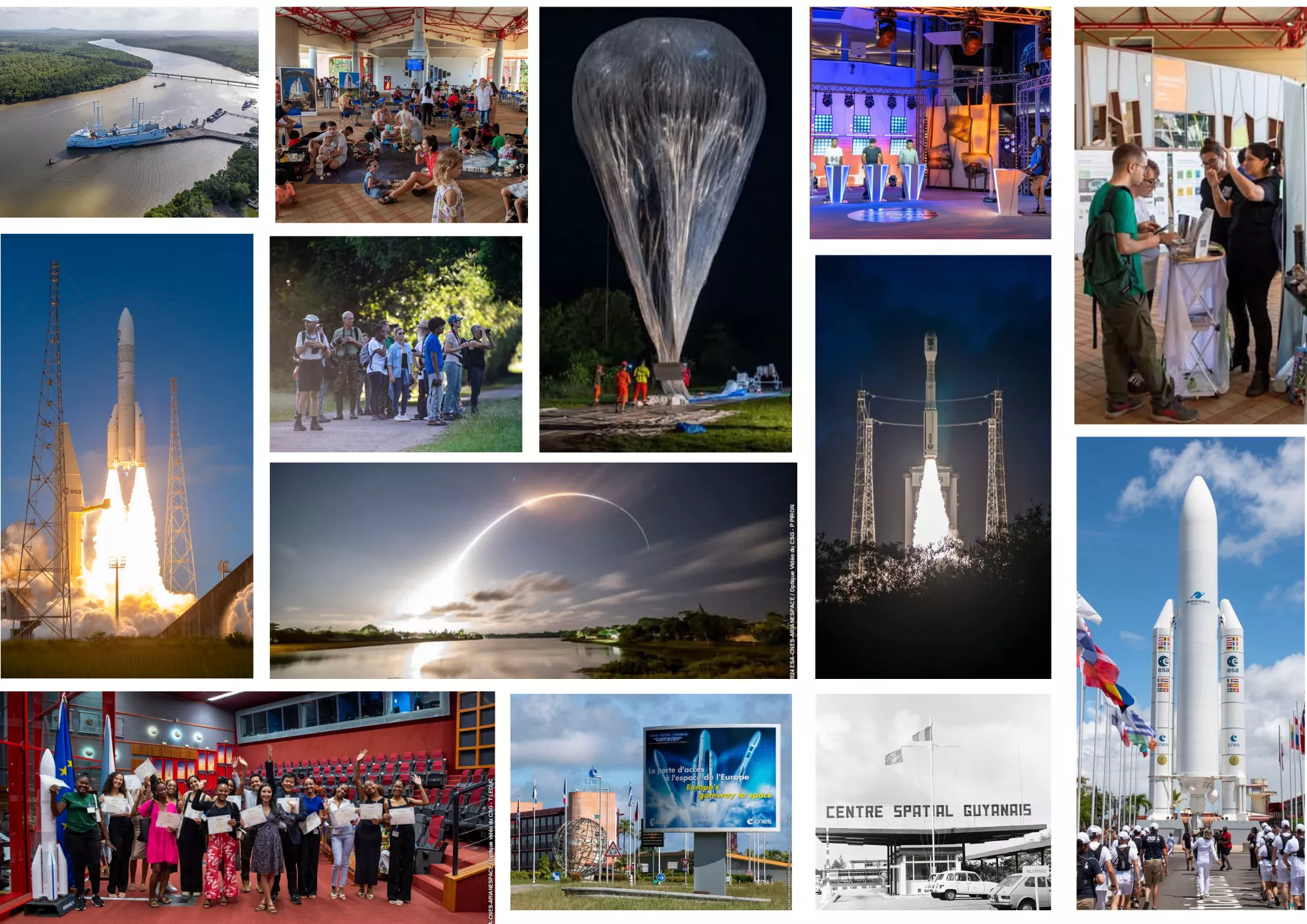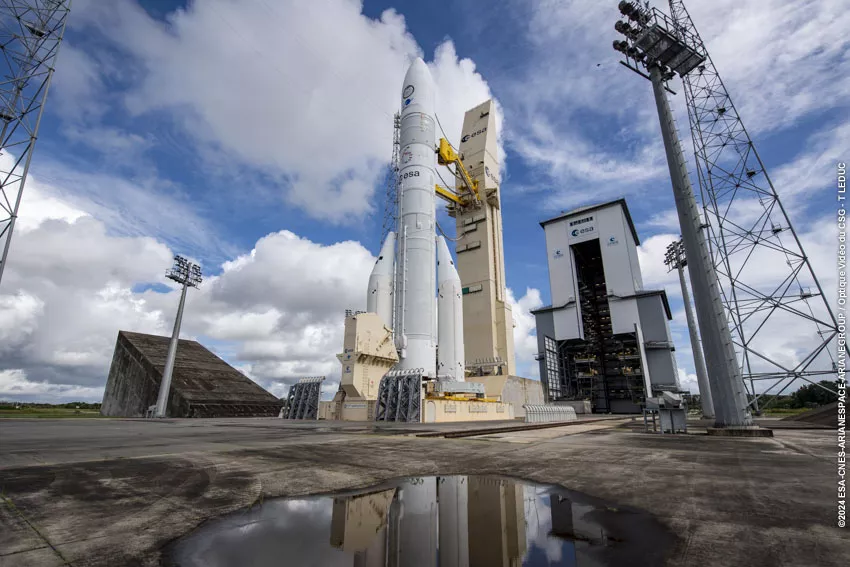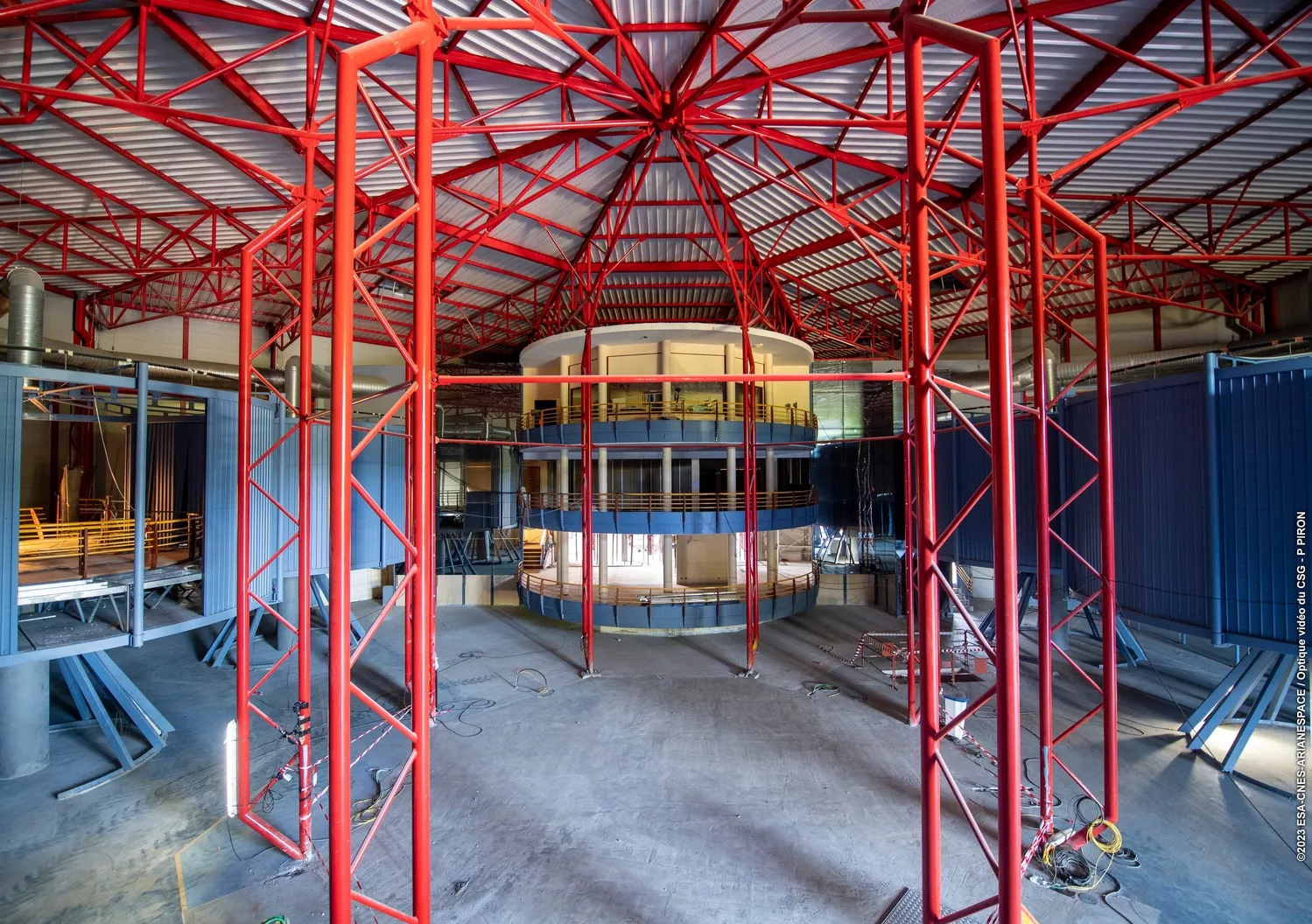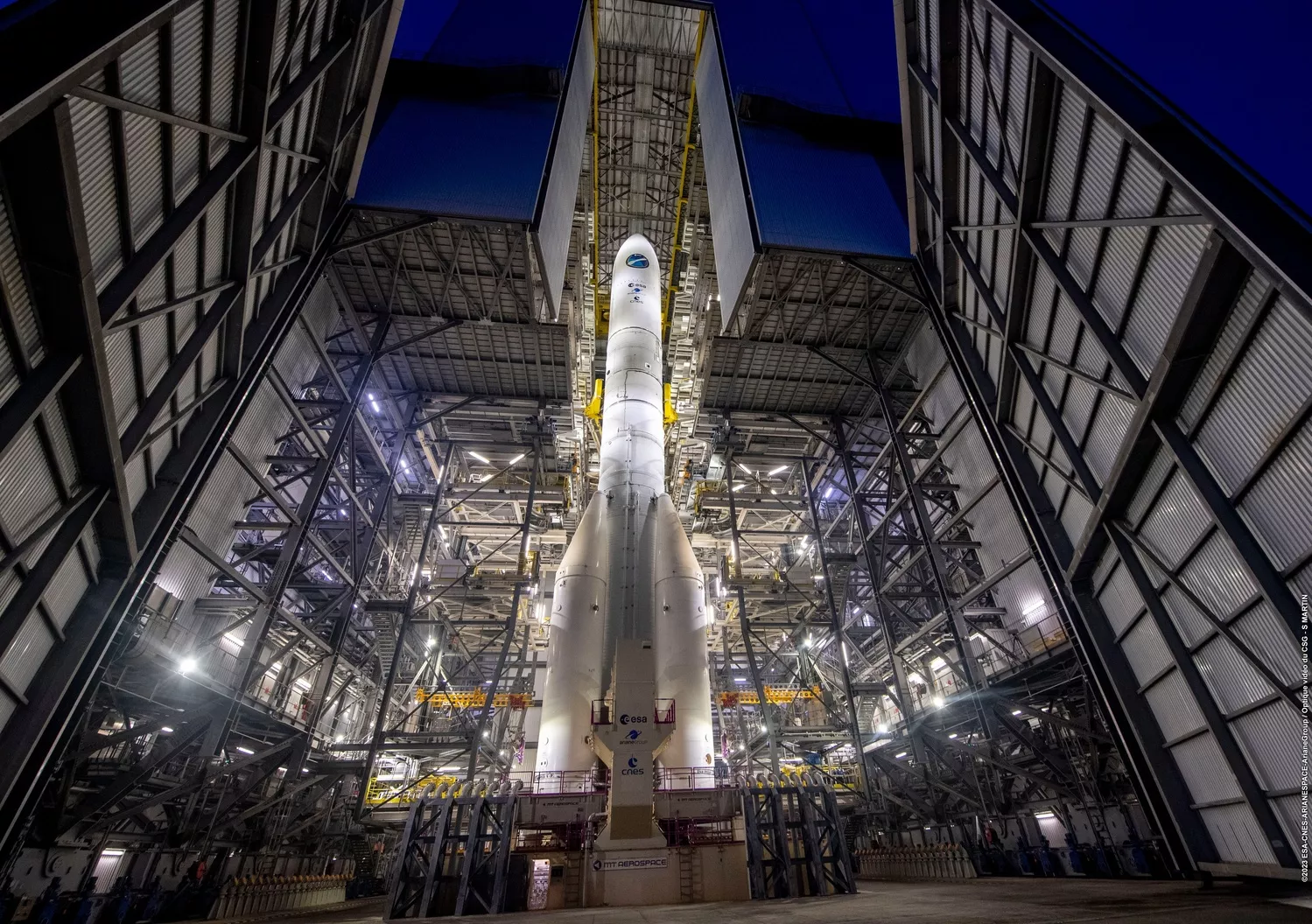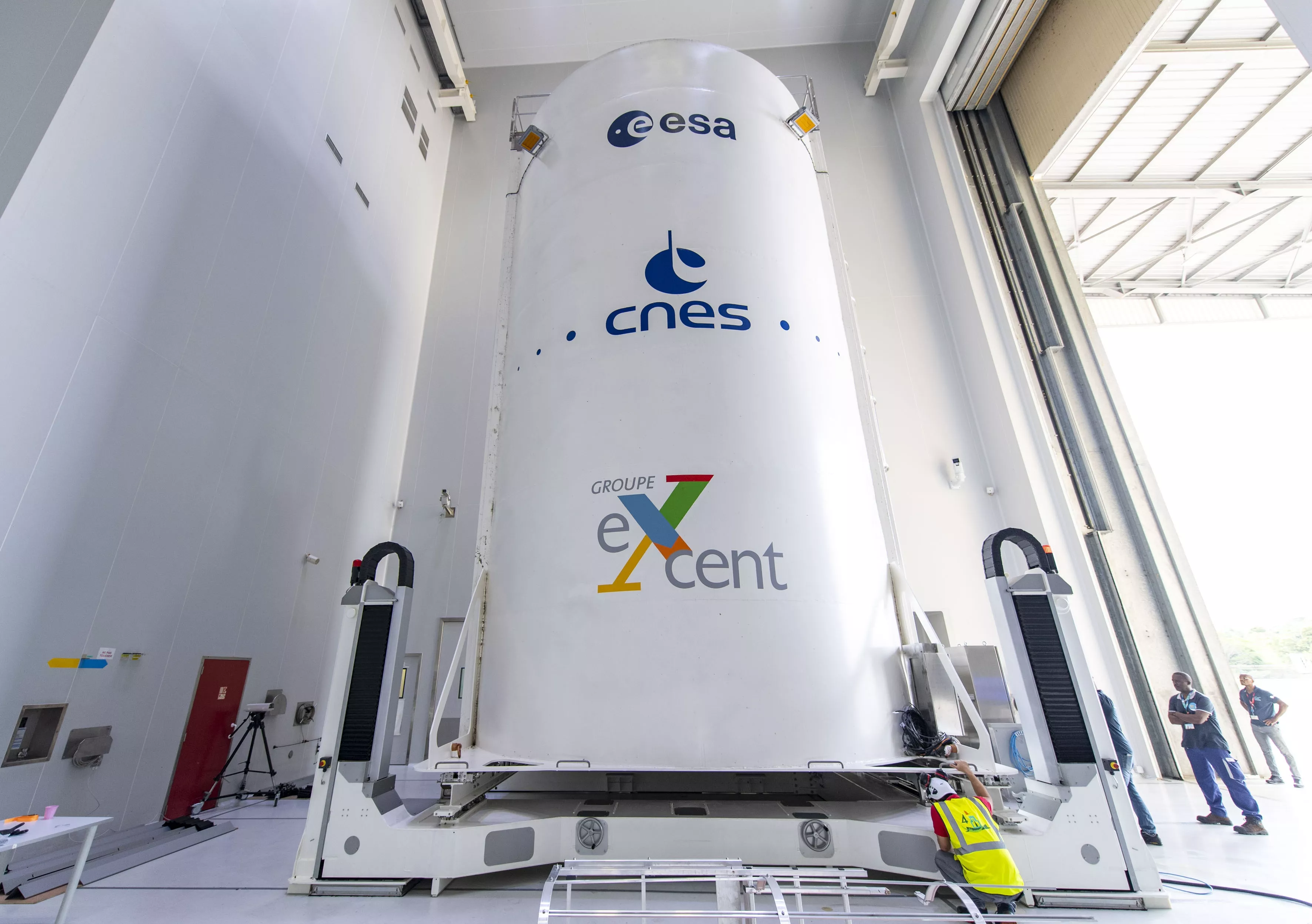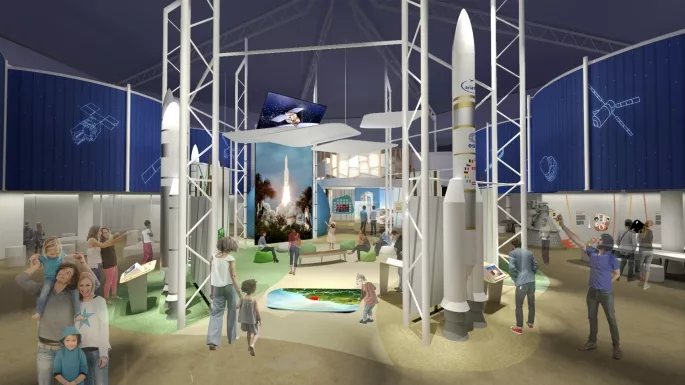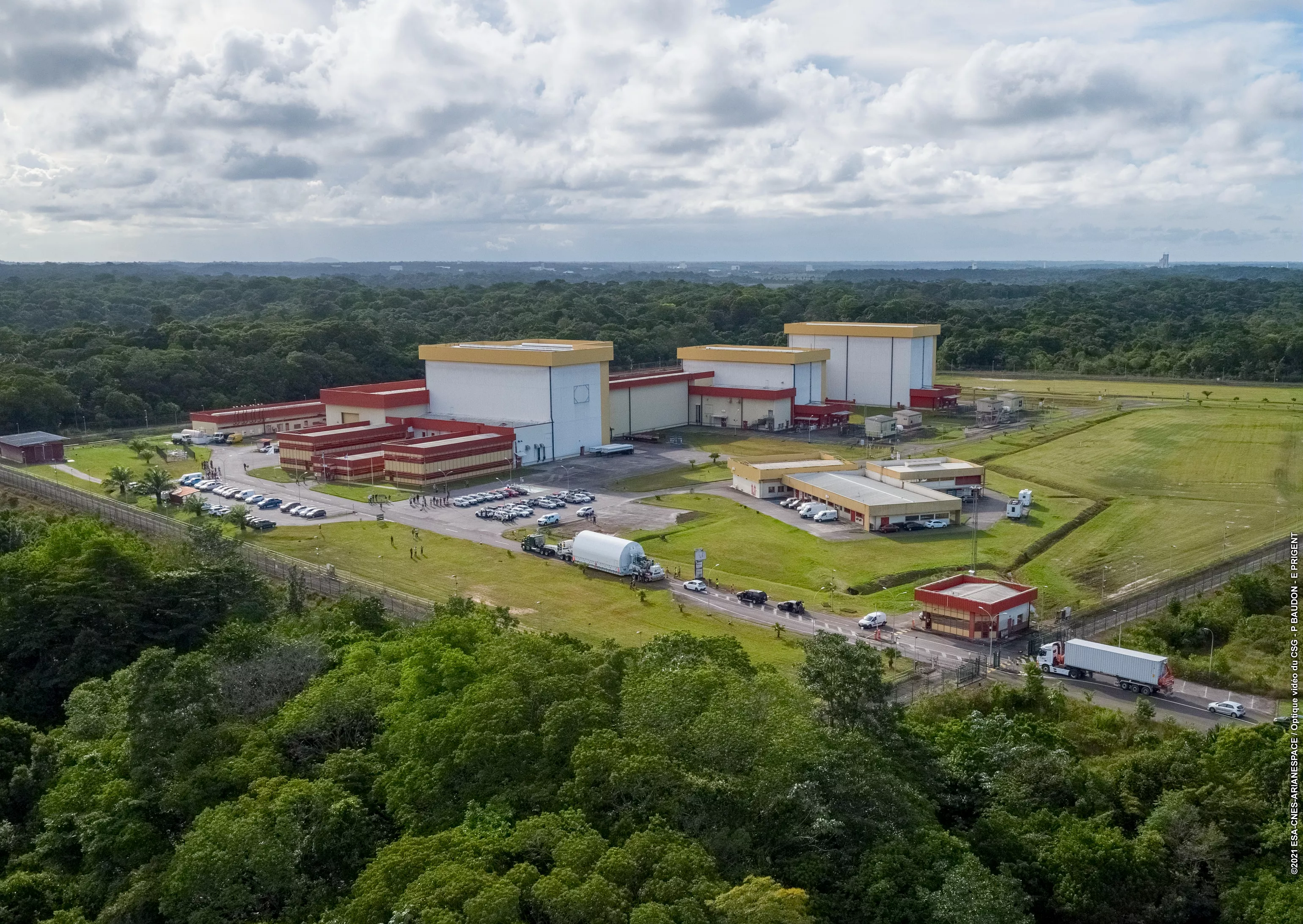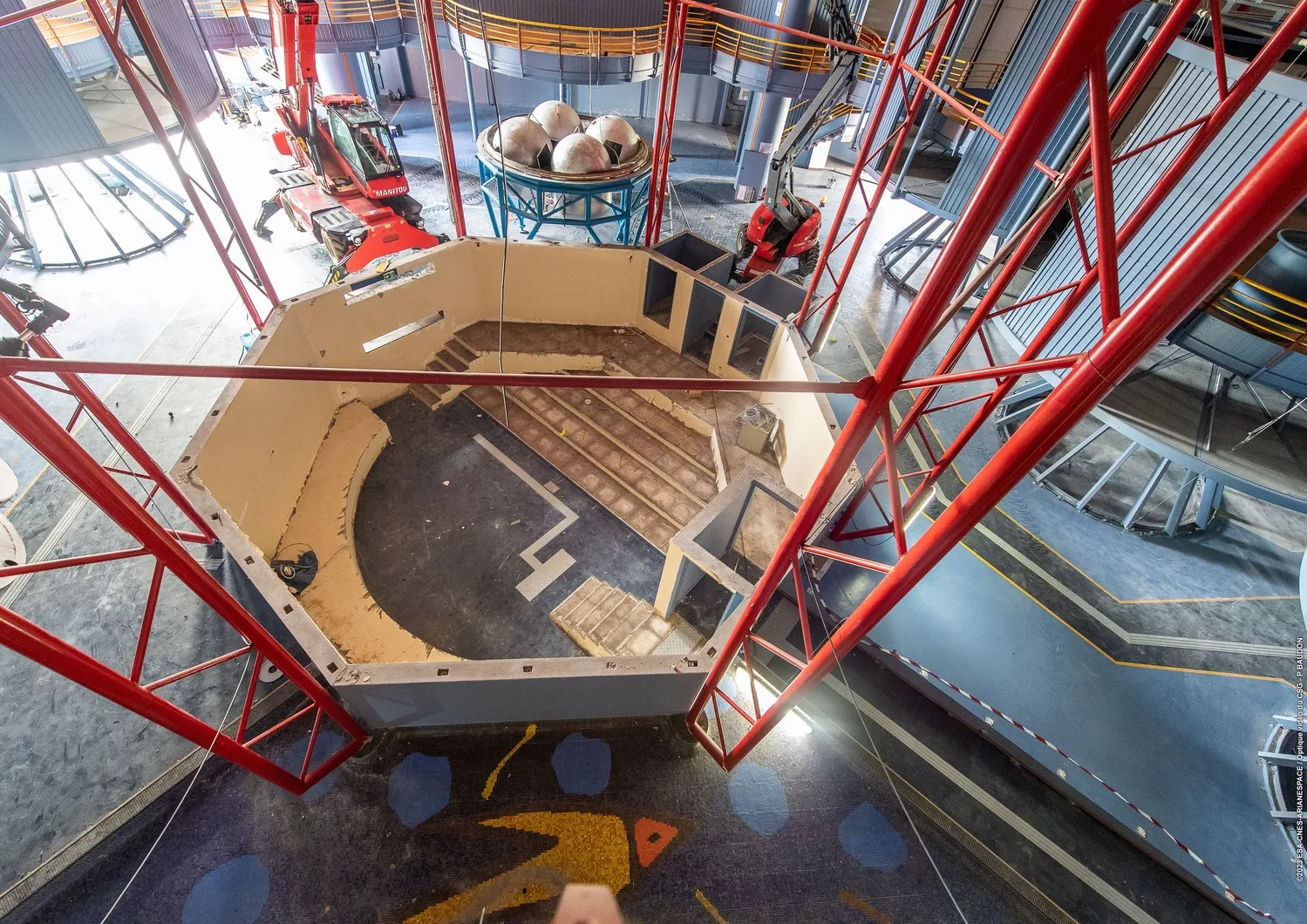Europe’s spaceport makes its energy transition
Between now and 2026, three solar power plants will produce a portion of the electricity required by Europe’s spaceport. To find out more, we spoke to Jérémy Hedin, Infrastructure and Energy Management Expert at the CNES, and François Clément, Studies and Works Expert, in charge of this large-scale project to supply the spaceport’s network with “green” energy.

François Clément and Jérémy Hédin, Energy engineers at CNES-Europe’s spaceport, in charge of the energy transition project.
We have a solar resource of around 2,000 kilowatt-hours per square metre over the course of one year.
What makes Europe’s spaceport an ideal environment for producing solar energy?
François Clément: The most favourable areas in French Guiana are the coast and the west. We have a solar resource of around 2,000 kilowatt-hours per square metre over the course of one year. That’s a fairly impressive solar potential (well above the global average).
How many fields are involved? How much power will they produce respectively?
François Clément: Three solar power plants are planned, delivering nominal power of between 4 and 5 megawatts, or enough power to supply 500 homes. All of the energy produced will be entirely self-consumed, meeting 15% of the site’s needs. That amounts to 150,000 tonnes of CO2 emissions avoided over 25 years for each solar power plant. This is equivalent to 20 return flights between Cayenne and Paris per year.
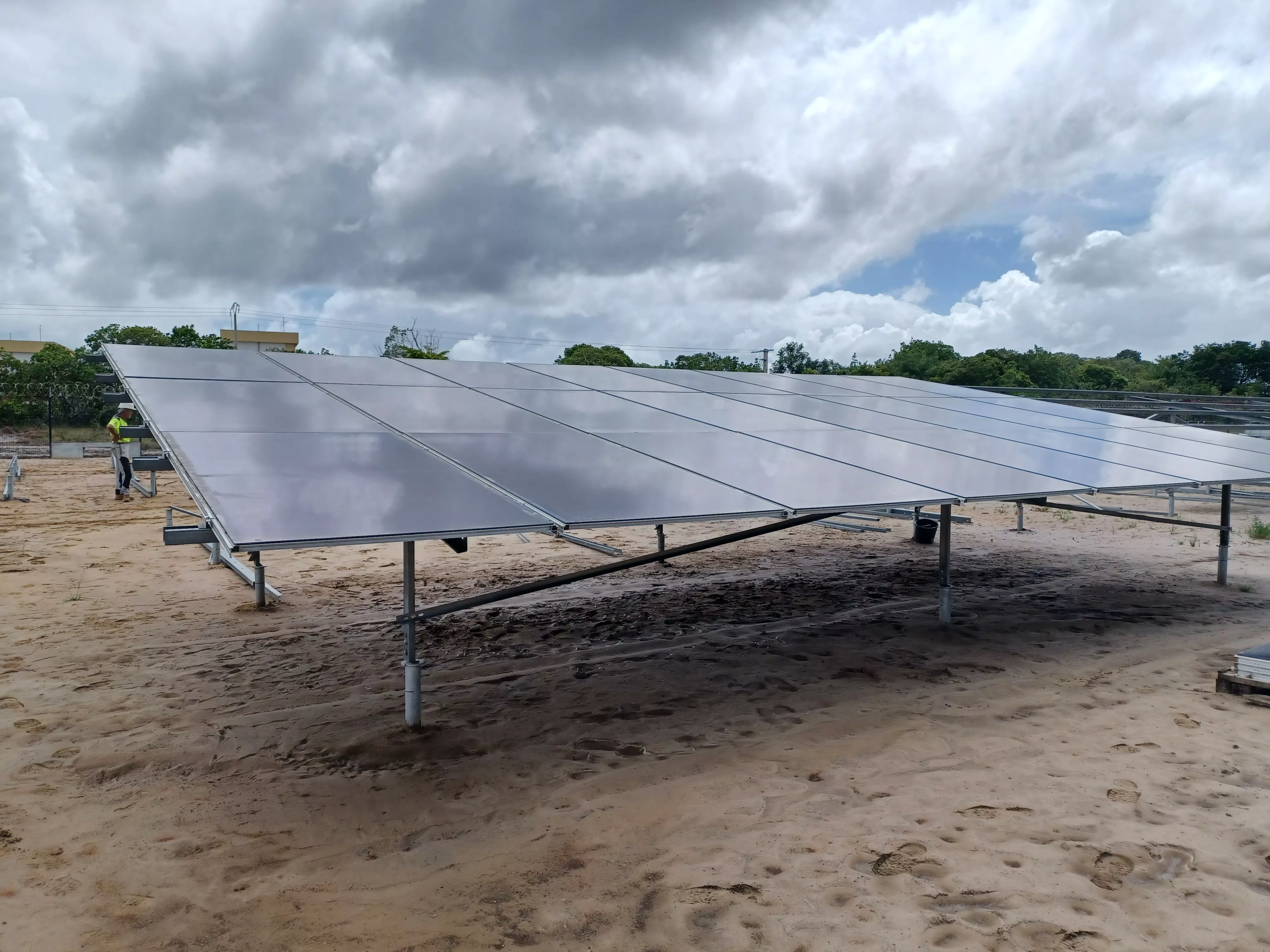
Emmanuel Cosson
Where are they located?
Jérémy Hedin: One solar power plant is located by the edge of route de l’espace, at the EPCU S5 payload preparation complex (PV2). Another is by the edge of route Corneille heading towards Régulus, the French Guiana propellant production facility (PV1). Finally, the third is near the Orchidée technical zone (PV3).
We selected the sites for the future power plants at a very early stage. We chose land that had already been developed or where the soil had been reworked, to limit the impact of the construction. We were careful not to disturb any protected species of flora and fauna that might have returned to those areas over time.
[…] At the Kourou site, power consumption was responsible for the most greenhouse gas emissions.
Generally speaking, what is the reasoning behind the construction of solar power plants at Europe’s spaceport?
Jérémy Hedin: Studies showed that, at the Kourou site, power consumption was responsible for the most greenhouse gas emissions. So, over the past ten years, the CNES has made reducing its carbon footprint a priority.
Initially, the promotion of energy-saving behaviour and the renovation of buildings were the main levers used to reduce consumption. The next step is to roll out the wide-scale use of solar power. Regulatory changes, and especially the French law on energy transition for green growth, are driving change in this area.
One of the options was to deploy small-scale installations on the Technical Centre buildings, but the buildings in question are due to be renovated shortly. That’s why we opted for ground-mounted power plants that are big enough to produce significant quantities of solar power. This was a logical decision, given that there are several manufacturers specialised in this type of installation in French Guiana.
The biggest challenge was meeting the deadlines.
To date, what challenges or constraints have you faced in the course of these projects (funding, organisation, schedules, and so on)? What solutions have been set up?
Jérémy Hedin: When making our design choices, we took great care to study the traceability of supplies. There are around 10,000 solar panels per power plant. We selected solar panels that comply with certain ethical codes and have one of the best manufacturing carbon footprints on the market. Any product likely to have been manufactured in conditions that violate human rights was rejected.
For PV2, the biggest challenge was meeting the deadlines, because the project is funded by the government’s France Relance scheme, with an obligation to deliver results within a tight time-frame. For example, on the site we found archaeological remains in the area and protected species that had not been inventoried at the start of the project. That meant we had to look at nature, environment and biodiversity issues again. The solar power plant’s reverberation was also revised, as it risked adversely affecting aircraft pilots flying over Europe’s spaceport.
François Clément: The project manager’s role is to draw on the various skills available. That aspect is important when it comes to negotiating an extension of the deadline with France Relance and getting around any difficulties regarding biodiversity and/or the technical side.
Have you used any similar projects, carried out previously, as a reference for constructing these three fields?
François Clément: We work with our engineering colleagues from Europe’s spaceport and Toulouse who build launch pads, production lines and buildings. It all provides input for a project- and work-oriented mindset that is firmly rooted in our processes.
To my knowledge, this was the first project to build a renewable energy power plant. A design and build contract was awarded to Voltalia for the development of the PV1 and PV2 power plants. This contractual model, in which the contractor is responsible for both engineering and construction, allowed us to speed up the design phase to meet the deadlines for the CSG NG¹ (PV1) and France Relance (PV2) programmes.
For PV3, which is the energy production component of the HYGUANE² project, it is possible to carry out a large part of the design work and apply for planning permission before signing a traditional works contract. This approach has the advantage of helping to keep costs down and reduce contingencies.
We now have enough experience feedback to be able to manage the potentially tricky phases, such as planning permission and the choice of equipment to be installed.
Did you contact any of the French Space Agency departments or teams to help with these projects?
François Clément: When unforeseen circumstances arose on the site of the PV2 plant, we were assisted by experts from Voltalia, our colleagues from the Safety/Environment department, and external service providers specialising in biodiversity, hydraulics and geotechnics. We have also recruited a student on a Renewable Energy Master’s course to consolidate the project team.
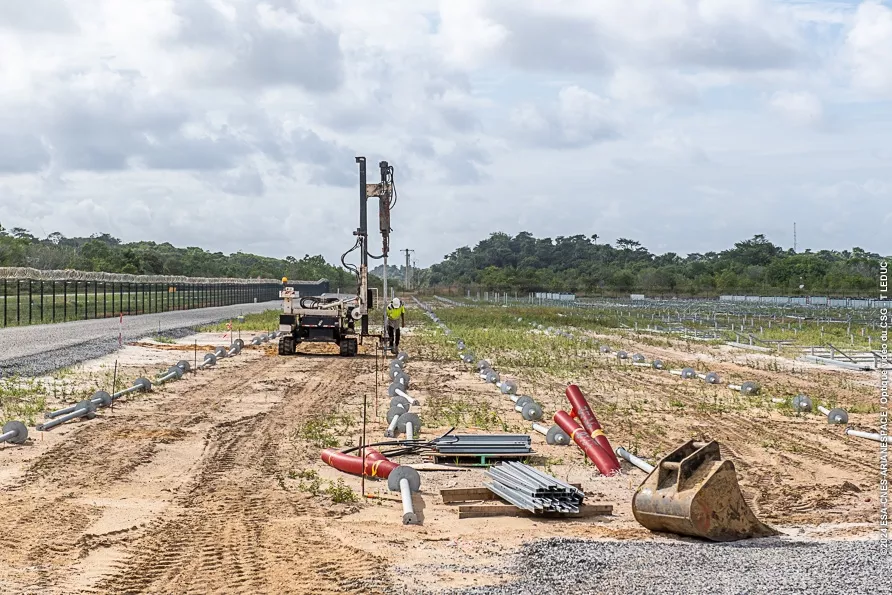
Worksite laying the foundations for the metallic structure that will support the solar panels. The drilling machine (see image) will be used to drive the piles into the ground at a depth of 2.5 metres.
How would you sum up progress so far?
Jérémy Hedin: PV2 is currently under construction and PV1 is awaiting planning permission. The call for tenders for PV3 will be launched this year.
We have a major challenge ahead of us: anticipating and closely monitoring the commissioning phases of these fields, in coordination with the project to overhaul the high-voltage network and operational activities related to the Ariane 6 and Vega launches. Once the solar power plants are up and running, we will need to learn how to optimise their operation, taking care not to negatively affect the quality of the electricity network, including at regional level with EDF, the electric utility company in charge of the network in French Guiana.
Project delivery:
PV2 - end 2024
PV1 - end 2025
PV3 - mid-2026
¹CSG NG: Europe’s spaceport - new generation: Programme funded by ESA (the European Space Agency), designed to modernise the launch base’s technical resources.
²HYGUANE: Environmentally Neutral Hydrogen in French Guiana.
In the same section
-
The French Space Agency’s commitments in French Guiana : review and outlook
29/01/2025Europe’s Spaceport: Recap of 2024 and outlook for 2025
28/01/2025Welcome to the new website of Europe's Spaceport
22/01/2025[Space Museum] update on the progress of the works
29/01/20242024 at Europe’s spaceport
15/01/2024Europe’s spaceport gets a new facility for satellites
06/12/2023[Space Museum] Progress report
25/09/2023EPCU S5 under construction
05/09/2023[Space Museum] Renovation work makes headway
04/05/2023At Europe’s spaceport, the energy revolution is in full swing
08/12/2022
